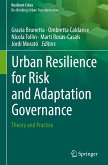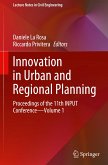This book discusses the role of regional design and visioning in the formation of regional territorial governance to offer a better understanding of (1) how a recognition of spatial dynamics and the visualization of spatial futures informs, and is informed by, planning frameworks and (2) how such design processes inform co-operation and collaboration on planning in metropolitan regions. It gathers theoretical reflections on these topics, and illustrates them by means of practical experiences in several European countries. Innovatively associating ideas with knowledge, it appeals to anyone with an interest in planning experiments in a post-regulative era. It aims at an increased understanding of how practices, engaged with the imagination of possible futures, support the creation of institutional capacity for strategic spatial planning at regional scales.
"The book's great strength lies in the wide variety of empirical studies as well as the helpful perspective each contribution gives to the general themes. ... the book provides interesting material for a wide readership, whether scholars of planning theory or urban studies to political scientists, while it is highly recommended for future spatial planners and designers." (Eurasien Geography and Economics, April 28, 2020)








